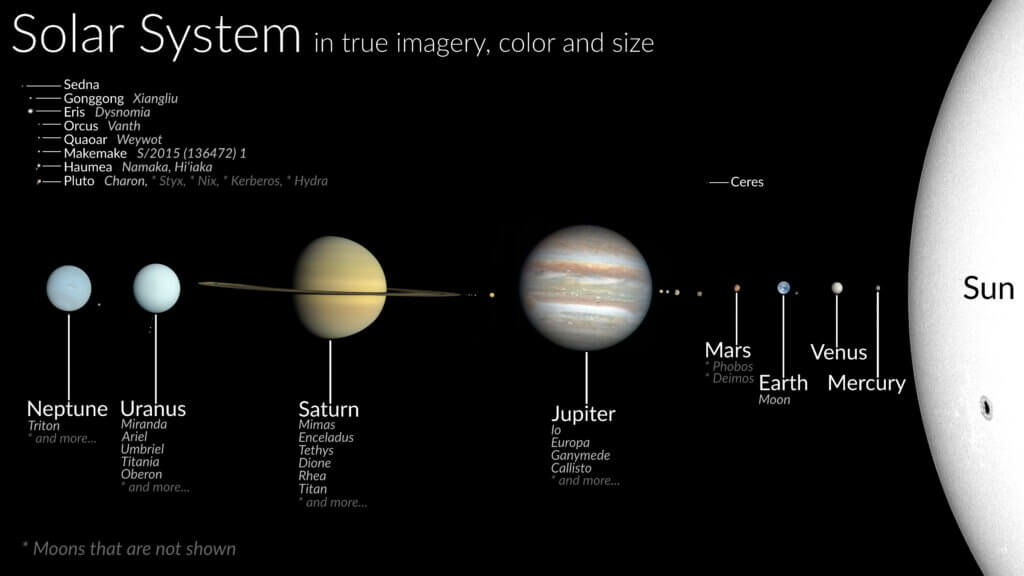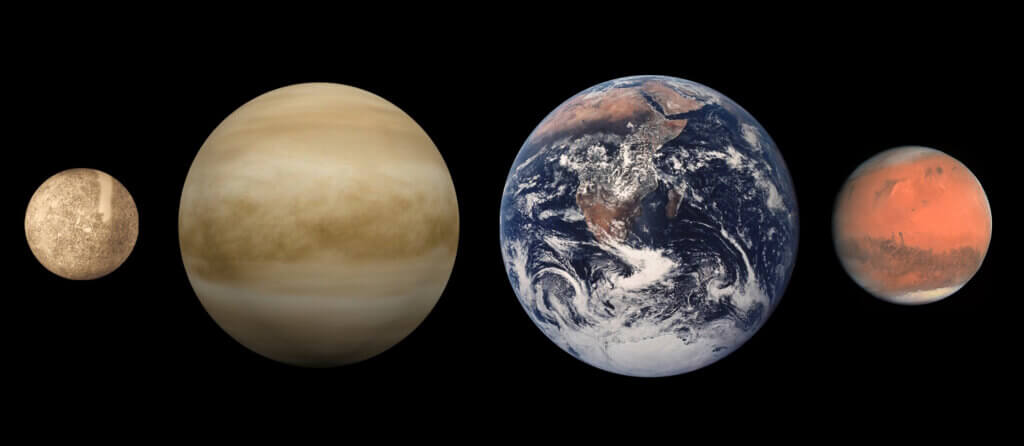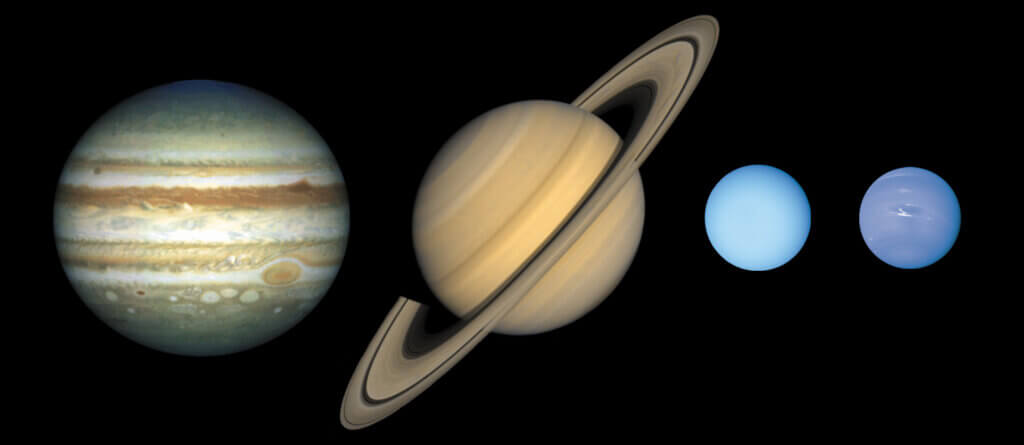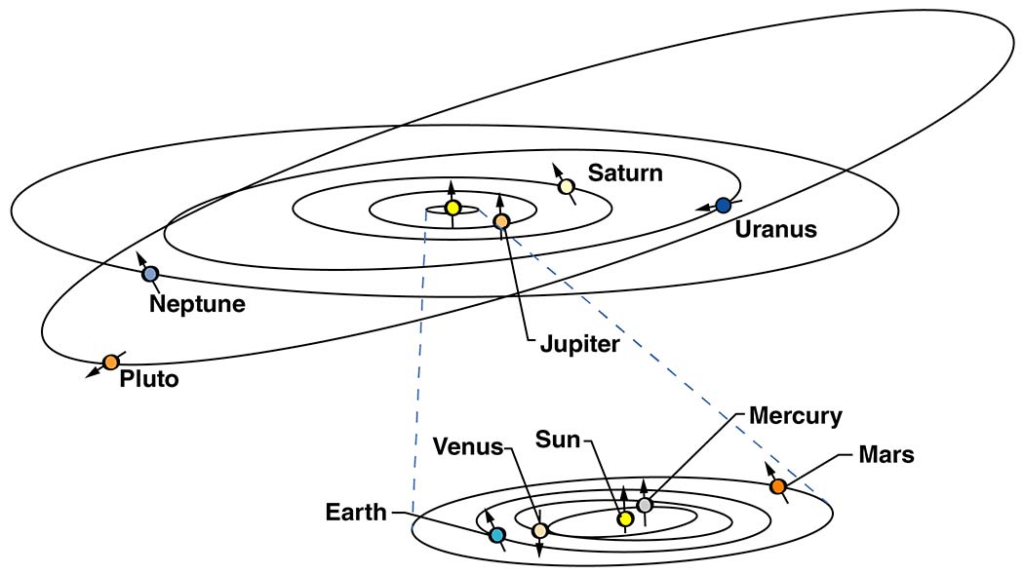The solar system, a vast cosmic neighbourhood, is centred around a star we call the Sun. It consists of eight recognized planets, numerous dwarf planets, moons, asteroids, comets, and a plethora of other smaller celestial bodies. This intricate system formed approximately 4.6 billion years ago from a giant rotating cloud of gas and dust known as the solar nebula.

The solar system consists of eight planets, each with unique characteristics and orbits around the Sun. The four inner planets—Mercury, Venus, Earth, and Mars—are rocky and terrestrial. Earth is the only one known to support life. Beyond Mars is the asteroid belt. This is followed by the gas giants Jupiter and Saturn, both known for their extensive systems of moons and rings. Farther out, the ice giants Uranus and Neptune, with their colder atmospheres and tilted rotations, mark the outermost regions of the solar system.
Inner Planets vs. Outer Planets
Inner Planets: Mercury, Venus, Earth, and Mars

The inner planets, also known as terrestrial planets, are the four planets closest to the sun in our solar system. These planets are characterized by their rocky composition and solid surfaces. They are smaller in size compared to the outer planets and have no rings or extensive satellite systems. The inner planets are also closer to the sun and have shorter orbital periods compared to the outer planets.
Outer Planets: Jupiter, Saturn, Uranus and Neptune

The outer planets, also known as gas giants, are the four planets farthest from the sun in our solar system. They are Jupiter, Saturn, Uranus, and Neptune. These planets are characterized by their massive size, thick atmospheres, and the presence of rings and numerous moons. The outer planets are composed mainly of hydrogen and helium, with some icy materials. They are much larger than the inner planets. They have longer orbital periods compared to the inner planets. These are located in the outer regions of the solar system.
Why are inner planets rocky and outer planets gaseous?
The inner planets are rocky because they form closer to the sun. The temperature here is high enough to melt and vaporize lighter materials, leaving behind the heavier rocky materials. The inner planets also formed early in the history of the solar system when there was enough energy to melt and differentiate these materials. On the other hand, the outer planets are gaseous because they form further away from the sun. Where lower temperatures allowed for the condensation of lighter gases, such as hydrogen and helium. The outer planets also formed later in the history of the solar system when there was less energy available to melt and differentiate materials. As a result, they remained mostly in their gaseous state and did not undergo the same level of differentiation as the inner planets.
In summary, the differences in composition between inner and outer planets are due to their formation locations and the conditions present during their formation. The inner planets formed closer to the sun and underwent differentiation, leading to their rocky composition, while the outer planets formed further away and remained mostly in their gaseous state due to the lower temperatures and later formation period.
Asteroid Belt
Asteroids are rocky, small Solar System bodies that orbit the Sun, primarily found in the asteroid belt between Mars and Jupiter. However, they can also be found in other regions of the Solar System, such as near-Earth asteroids (NEAs), trojan asteroids, and centaurs…continue reading
Axial Tilt of a Planet
The axial tilt of a planet refers to the angle between its rotational axis and the plane of its orbit around the sun. This tilt causes the planet to experience seasons, with different parts of the planet receiving varying amounts of sunlight throughout the year.
The axial tilt of planets in our solar system varies. Here are the approximate axial tilt values along with the diameter and rotational period for some of the planets:
| Celestial Body | Diameter (km) | Rotational Period (Hours) | Axial Tilt | Revolution Period (Earth Years) |
|---|---|---|---|---|
| Mercury | 4,880 | 58.646 | 0.01° | 0.24 |
| Venus | 12,104 | 243.025 | 177.36° | 0.62 |
| Earth | 12,742 | 23.934 | 23.44° | 1 |
| Mars | 6,779 | 24.622 | 25.19° | 1.88 |
| Jupiter | 139,822 | 9.925 | 3.13° | 11.86 |
| Saturn | 116,460 | 10.687 | 26.73° | 29.46 |
| Uranus | 50,724 | 17.240 | 97.77° | 84.01 |
| Neptune | 49,244 | 16.135 | 28.32° | 164.79 |
Planetary Orbits
The orbits of planets in our solar system are elliptical, meaning they are not perfectly circular but rather oval-shaped. This is due to the gravitational interactions between the planets and the sun. The shape of a planet’s orbit is determined by its velocity and distance from the sun. The closer a planet is to the sun, the faster it moves in its orbit.
While the farther away it is, the slower it moves. This is known as Kepler’s laws of planetary motion.
The orbits of planets are also inclined at different angles relative to the ecliptic, which is the plane of Earth’s orbit around the sun. This means that some planets, like Venus and Mars, have orbits that are nearly aligned with Earth’s orbit, while others, like Jupiter and Saturn, have orbits that are tilted at a greater angle. This can affect the visibility of these planets from Earth, as well as their apparent position in the sky.

The orbits of planets are also affected by the gravitational pull of other planets in the solar system. This can cause slight perturbations in their orbits, which can be observed through changes in their positions over time. These perturbations can also affect the stability of the solar system, as they can cause small changes in the orbits of other planets, which can have cascading effects on the entire system.